Welcome to the landscape photography blog by Chuck Derus. Thanks for looking and for your comments!
What's That?


The sky held promise for a colorful Sunday morning. So, I called fellow photographer Scott Fuller to meet me an hour before dawn at Wolf Point, the confluence of the east, north, and south branches of the Chicago River. We anticipated a colorful sky to compliment an “urban canyon” cityscape photo looking down the east branch of the river.
With cityscapes and landscapes, the sky is everything. Without a good sky, pictures are usually disappointing. That’s why you see serious photographers heading indoors with their cameras when it’s “severely clear.”
Like most things in life, plans change. The morning color was almost non-existent. It was time for Plan B.
Delayed by What?
After months of delays, Santiago Calatrava’s new sculpture Constellation had just been completed. Calatrava is a world-renowned architect and artist. If you don’t know Calatrava’s work, here’s his Milwaukee Museum of Art’s Quadracci’s Pavilion.

 Source: Milwaukee MOM website
Source: Milwaukee MOM website
You may recall that Calatrava’s last Chicago project was the canceled 2,000-foot-tall Chicago Spire. The twisting skyscraper would have been the tallest building in the Western Hemisphere if construction hadn’t been halted due to the recession of the late 2000s.
So, why the delays? The Constellation was supposed to be completed in August. Unfortunately, two large rocket fuel tanks for NASA took precedence at the Ohio company fabricating the sculpture. Work on Constellation installation didn’t resume until October.
What’s That?
Luckily, Scott and I were near the Constellation in the 1.5-acre River Point Park in front of the striking 52-story River Point Tower. It’s near the intersection of West Lake Street and North Canal Street.
The sculpture is a breathtaking, vibrant, red vortex design that overlooks the Chicago River’s confluence. This is my shot of the sculpture looking west towards the sculpture in front of River Point Tower.
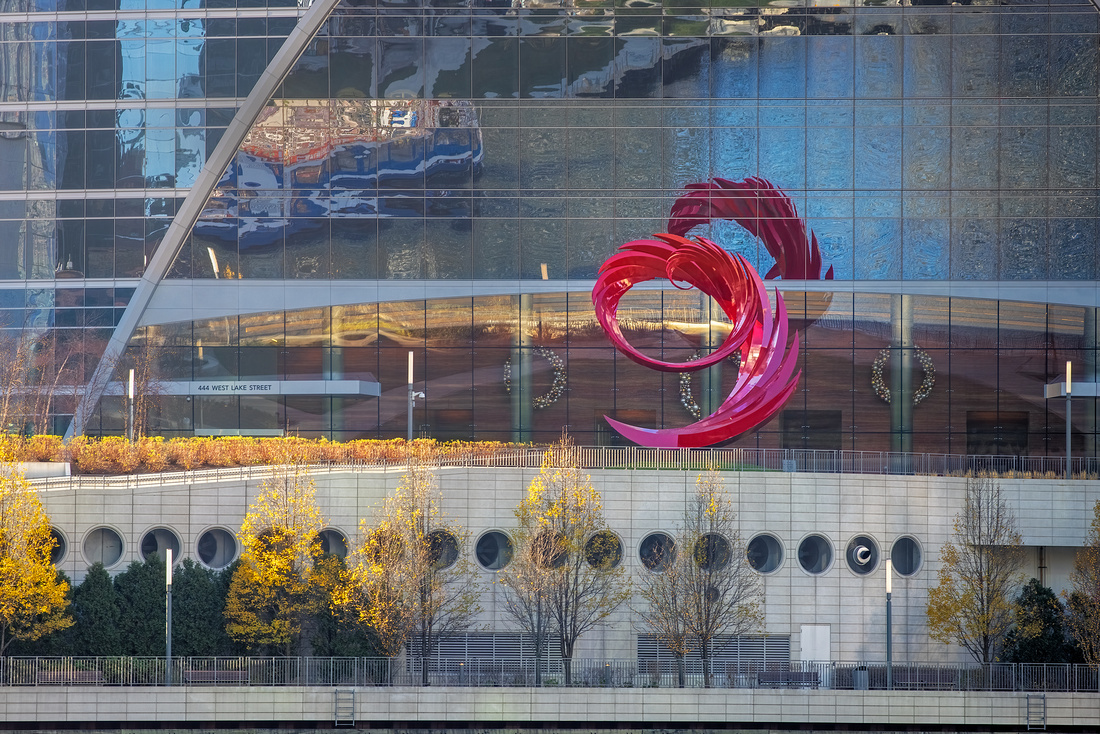
 Sunday morning’s Plan B was the Constellation. Part of the fun of photography is that the eye and the camera see differently. Scott and I spent the next two hours photographing different angles and perspectives. My favorite was this one looking straight up with a wide-angle lens.
Sunday morning’s Plan B was the Constellation. Part of the fun of photography is that the eye and the camera see differently. Scott and I spent the next two hours photographing different angles and perspectives. My favorite was this one looking straight up with a wide-angle lens.
Thanks for looking,
Chuck Derus
Let's Hit the Beach!


An afternoon at the beach. What could be more pleasant? That’s what I thought while driving to Michigan City, Indiana on Monday.
The forecast was for temperatures in the low 30s, 20 mph winds with gusts up to 38 mph, and a “wintery mix” of rain and snow. Oh, and the waves could be as high as 22 feet!
OK, so only photographers are going to get out of their car on a day like that. I was headed for the Michigan City Lighthouse.
Michigan City
The town served as the principal grain market for northern Indiana between 1837 and 1844. In the 1850s, railroads came bringing their repair shops with them.
The Haskell & Barker Car Company was established in 1852. Manufacturing up to 15,000 railroad cars a year, it quickly became the city's largest employer. The lumber market also boomed.
Cheap convict labor became available to manufacturers when the Northern State Prison opened in the early 1860s. Harbor construction began after the Civil War. By 1868, the Michigan City Harbor could accept large vessels.
The town’s fortunes began to wane after 1900. Convict labor was outlawed. The lumber trade died out. The Michigan Central Railroad moved its rail shops at the close of World War I. Hoosier Slide, the town's once-towering sand dune, was completely mined out by the 1920s.
The Lighthouse
There has been a lighthouse at the harbor for 183 years. The first was an 1837 brick & stone lighthouse built at the edge of Lake Michigan. The second lighthouse, built in 1858, is now a museum near the entrance to the park.
The current lighthouse was built in 1904. It uses the old lantern, lens, and light from 1858. Seven lighthouse keepers and 14 assistant keepers served here from 1837-1940. From 1904 until 1933, keepers had to walk across an elevated iron walkway, or “catwalk”, to reach the lighthouse.
In 1933, the lighthouse was electrified. In 1939, the U.S. Coast Guard took over the service. The now unused catwalk was at risk of demolition.
In 1960, the lighthouse was deemed surplus by the Coast Guard. The General Services Administration sold it to Michigan City in 1963 for $18,500. The catwalk was placed on the National Register of Historic Places in 1974.
The Shot
I knew when I arrived that this was going to be interesting. I had to lean into the wind just to inch my way from the parking lot to the beach. And when I started kneeling to set up my gear, a powerful gust of wind knocked me over backwards.
The wind stung me with a mix of snow, rain, and sand. It turned out that crouching behind a concrete handrail stanchion offered a little protection from the wind. And if I positioned my lens perfectly, it stopped getting covered with rain and snow.
I hope you feel the power of a Great Lakes storm from the photograph. And if you’re a little daring, head out there for yourself when the next wave forecast says to stay away.
Thanks for looking,
Chuck Derus
A Chance Meeting
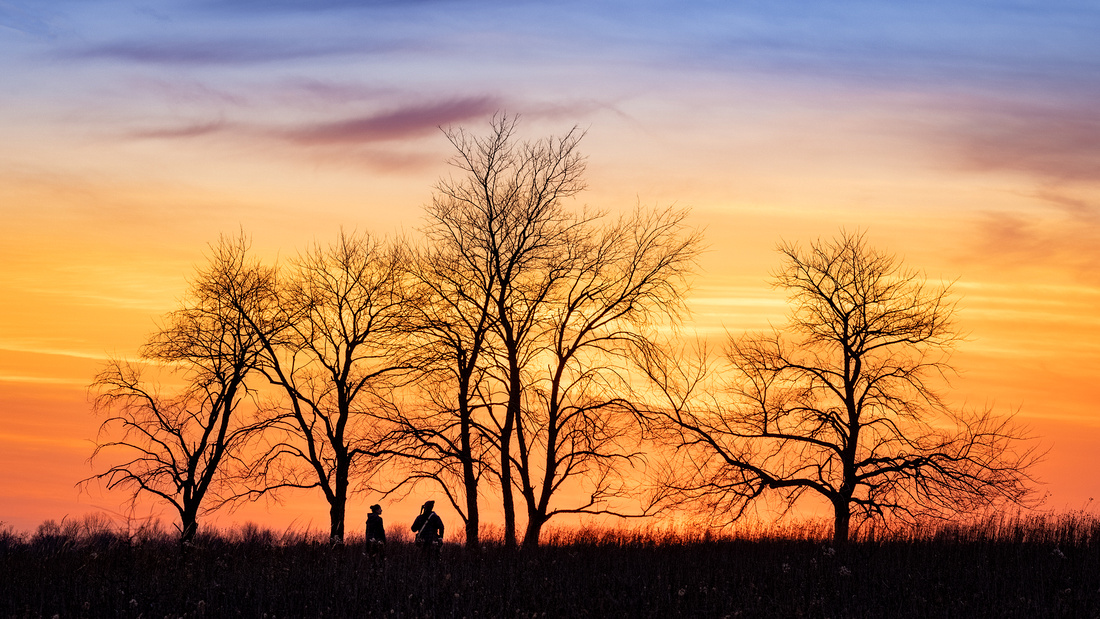

How do you meet a meteorologist? Purely by chance for me. Over five years ago, I was at Four Lakes Ski Area in Lisle, Illinois at a Meetup outing.
Meetup groups are a way to “connect with others who share your unique interests and passions.” On that cold Saturday morning in February, the Naperville Photo Meetup was photographing a special event featuring skiers in Halloween costumes.
A woman who looked familiar walked up and handed me her card. It was Mary Kay Kleist, CBS2 Chicago Meteorologist.
She was looking for photos of a costumed skier to run on her weather report that evening. In addition, her teenaged son was snowboarding, and she asked if I had taken his photograph.
She only handed out cards to two other photographers. Puzzled, I asked why she didn’t hand out more cards. It turned out that we were the only three photographers using big telephoto lenses.
I was thrilled to see my costumed skier photo on the evening weather segment. And I sent Mary Kay a picture of her son in midair coming off a mogul. Ever since, when subject matter and timing work out, I send her a Chicago area photo.
Bare trees
Travel is great, but I’m usually at home in Naperville. Finding local photo opportunities is important.
Springbrook Forest Preserve in Naperville is my favorite. Last Thursday, conditions looked promising for a colorful sky at sunset. And the Preserve’s bare trees can produce stark images with interesting, high contrast shapes.
I set up with a telephoto lens to isolate a line of trees against the horizon. Springbrook is seldom crowded, but there were numerous photographers with serious telephoto lenses there.
A couple walking by told me about a rare owl alert posted on a bird watcher’s network. They were at Springbrook along with numerous others to find and photograph an elusive owl.
When they walked away, I noticed they were headed in the direction of my composition. I turned my exposure down to produce a silhouette and waited.
The couple stopped momentarily in a small gap and I pressed the shutter. Since it was only 4:40 pm I had enough time to process the photo and email it to Mary Kay for possible use on the 6:00 pm weather.
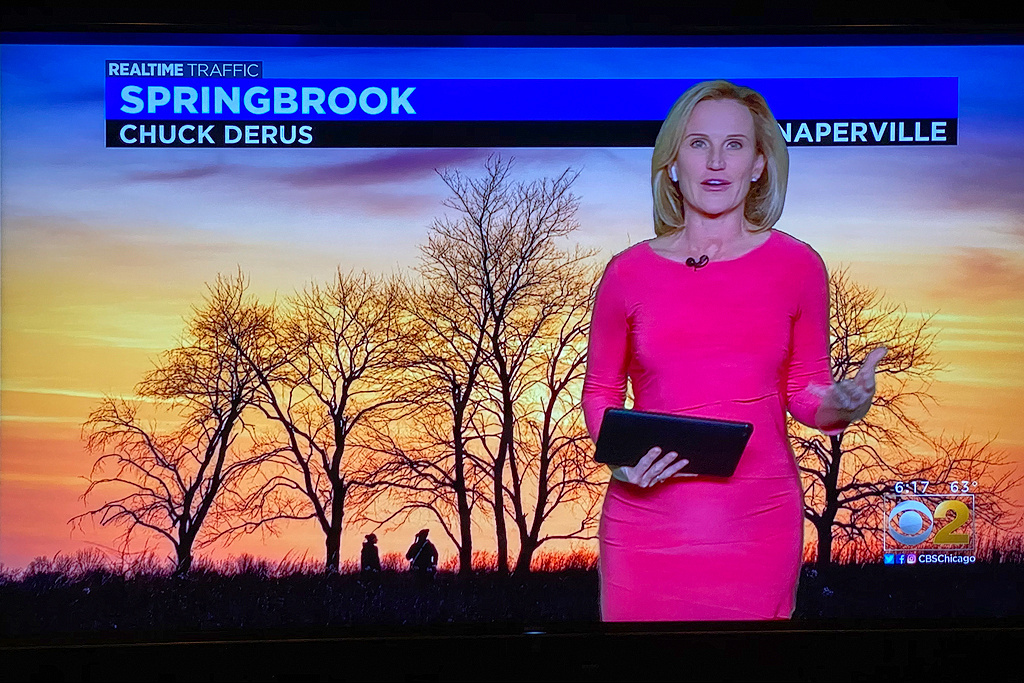

It’s still a thrill to see one of my photos on television.
Part of my Thanksgiving is to thank each one of you for taking the time to view the Friday Photo.
Chuck Derus
Adventures in the Swamp
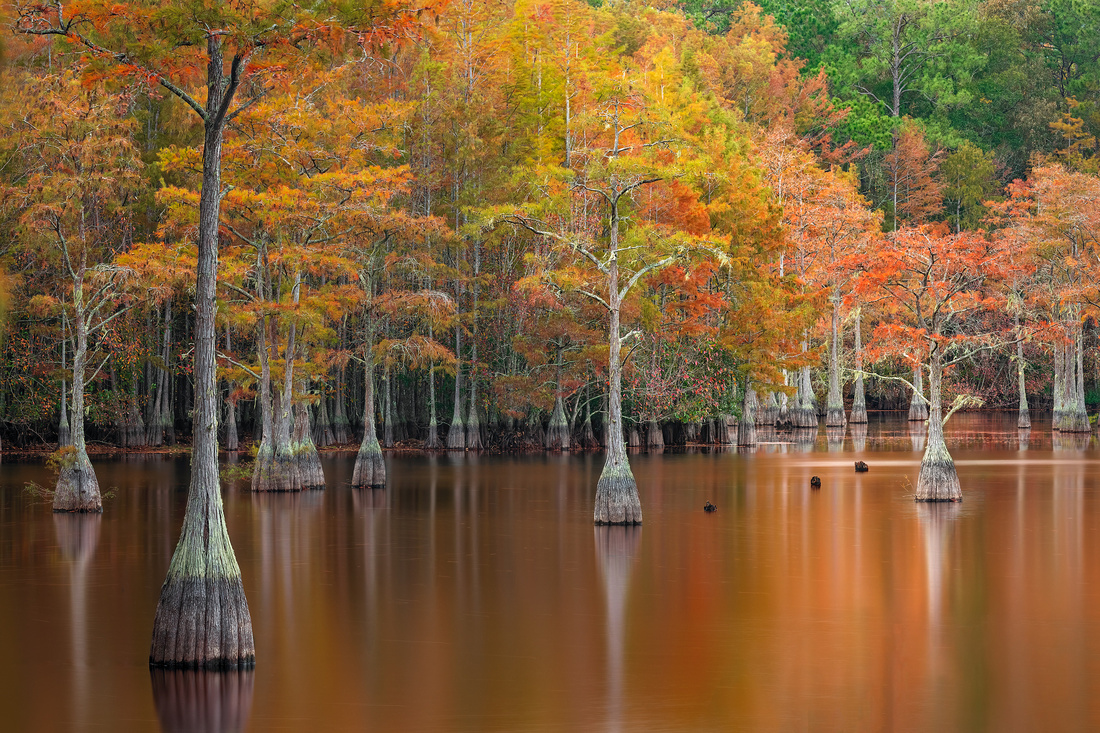

Taking last week’s Friday Photo was a unique experience. I found myself paddling a kayak to various locations on a 400-acre pond in Southeast Georgia. Once I found a promising composition, I used my paddle as a depth gauge.

 My hope was to hit bottom with a few inches of paddle to spare. If it did, I knew the top of my tripod would be above water.
My hope was to hit bottom with a few inches of paddle to spare. If it did, I knew the top of my tripod would be above water.
If the location was shallow enough, I jammed my tripod legs into the unseen muck on the bottom. If I was lucky, the tripod ended up above the surface. Next came attaching my camera to the tripod.
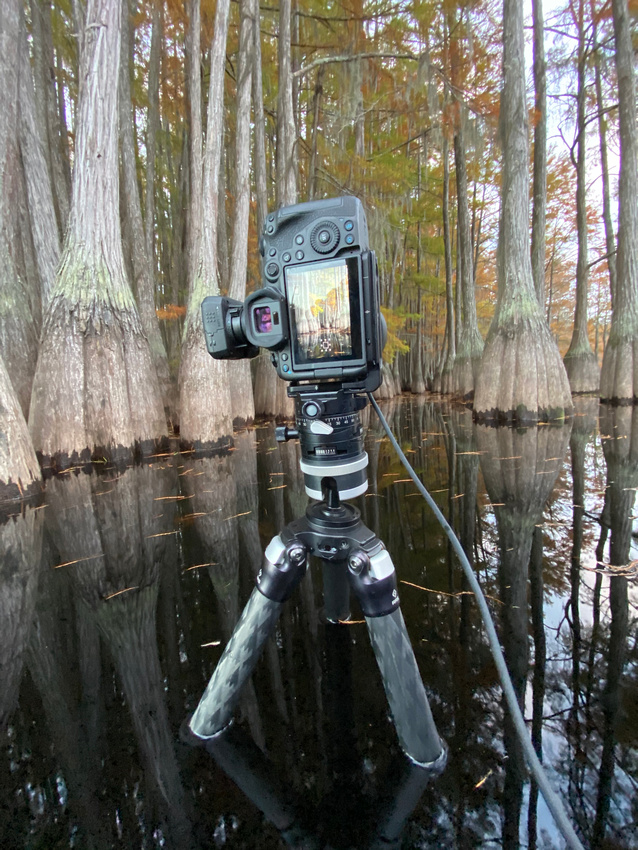

I have to admit that my trepidation never lessened. I kept worrying about seeing my expensive gear drop into the murky depths. After that, I needed to fine tune the composition. Trying to move a heavy, waterlogged tripod with a camera on top from a kayak was sometimes maddening.
Finally, it was a matter of trying to keep the kayak close enough to my gear to take the pictures.
A much easier shot
Today’s Friday Photo was easy compared to the kayak. This one was taken from a dock with a telephoto lens. There was no problem moving slightly to improve a composition. I didn’t drift away from my gear.
And best of all, I could see my tripod on solid ground.
Thanks for looking,
Chuck Derus
Fall in the Swamp
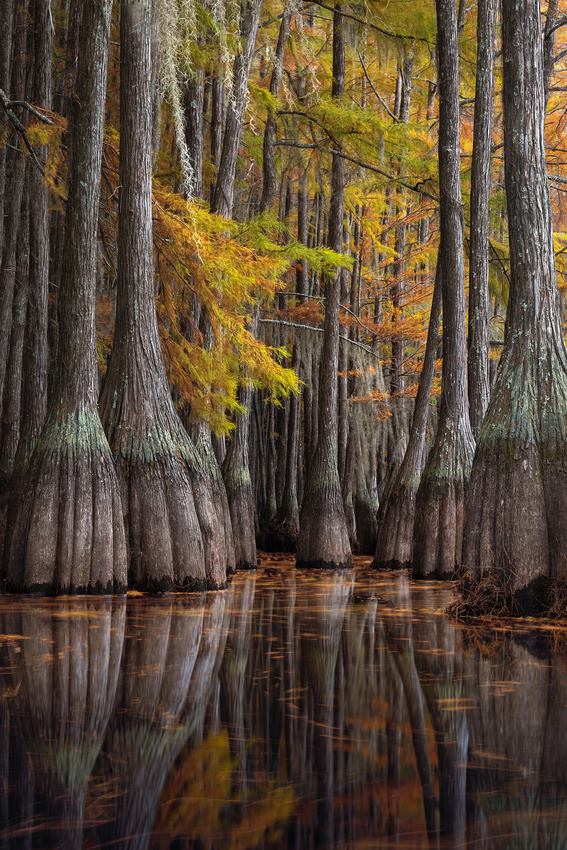

This will be short today. I just returned home from Georgia last night after driving 964 miles in two days. I only had time to process one photograph.
What made the long drive worth it? It was the opportunity to photograph a swamp. Yes, I said swamp.
What made the swamp special were the Georgia cypress trees. Unlike the year-round green of Florida cypress trees, the Georgia cypress were ablaze with fall colors in mid-November.
After nearly three hours of paddling my kayak, I settled on this location for my sunset shot. What made the photograph even more rewarding was finding my way back to the launch site in the dark!
Thanks for looking,
Chuck Derus